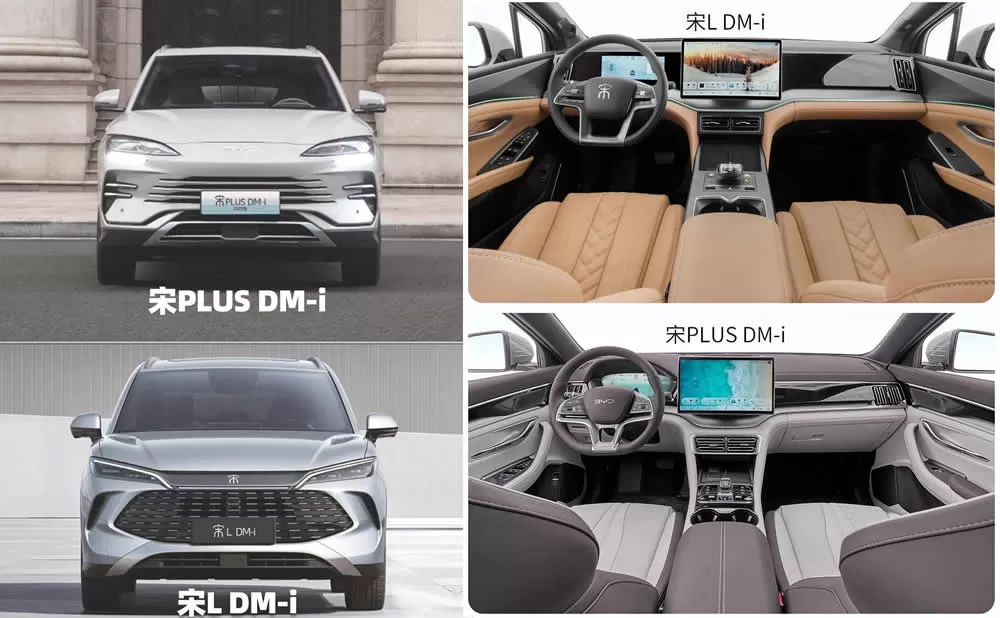
In the electric vehicle market, the BYD Song series is like a phenomenal dark horse, dominating the sales rankings for a long time. But for the DM-i models of Song Plus and Song L, they have many similarities in configuration and are very close in price. So how should we choose? Next, we will compare these two cars in many aspects.
Model positioning
Song PLUS DM-i: Positioned as a compact family SUV, focusing on practicality and family scene coverage, with monthly sales of 26,417 units (data from May 2025), and high market recognition of 1.
Song L DM-i: Positioned as a mid-size sports SUV, focusing on youthful design and control experience, with monthly sales of 11,203 units, and a sales gap of 2.3 times.
Target group
Song PLUS DM-i: Family users (especially families with two children), county consumers, focusing on space practicality and full-cycle costs.
Song L DM-i: Young groups, urban users, prefer sports appearance and technological configuration36.
|
Dimensions |
Song PLUS DM-i |
Song L DM-i |
|
Platform architecture |
Mature oil-to-electric platform (rear suspension upgraded to four-link) |
New P5 hybrid dedicated platform (body stiffness increased by 15%) |
|
Body size |
4775×1890×1670mm,wheelbase 2765mm |
4780×1898×1670mm,wheelbase 2782mm |
|
Space |
Flat floor in the rear, no pressure for three people to sit
Trunk volume 574L (expandable to 1440L |
Better legroom in the rear (measured four fists) Fastback design sacrifices headroom (only 3 fingers left for 1.8 meters tall) |
|
Comfort |
Rear air conditioning vents are standard for all models |
Low-end models require additional price to install rear air conditioning vents |
Shared technology
Both are equipped with the fifth-generation DM-i hybrid system, with a comprehensive range of 1500km and a fuel consumption of 3.9-4.4L/100km when the battery is depleted.
Performance differences:
Song L DM-i accelerates from 0 to 100 km in 7.5 seconds (more aggressive tuning);
Song PLUS DM-i accelerates in about 8 seconds, focusing on smoothness and energy saving.
Intelligent configuration
Song L DM-i: High-end models are equipped with 15.6-inch central control screen, 8-megapixel intelligent driving camera, and DiPilot system recognition distance of 250m6.
Song PLUS DM-i: 12.8-inch central control screen (some models), DiLink system meets basic needs6.
Safety protection
Song L DM-i: 7 airbags for the whole series (including front remote airbags);
Song PLUS DM-i: 6 airbags as standard, 62% high-strength steel in the body.
|
Indicators |
Song PLUS DM-i |
Song L DM-i |
|
Channel coverage |
3,200 stores on Haiyang.com (covering 90% of counties) |
30% fewer Dynasty outlets, limited county experience |
|
Value retention rate |
Value retention rate after three years is 65.2% (second-hand car circulation is fast) |
Value retention rate after three years is 53% (second-hand car needs to be discounted by 30,000 yuan) |
|
User rights |
Additional 5,000 yuan for old customers + free maintenance for referrals |
Rights limited to the first owner (second-hand car has no lifetime warranty on three electrics) |
Choose Song PLUS DM-i:
Family users with just needs and county consumers give priority to practical space, low maintenance costs and high value retention rate.
Choose Song L DM-i:
Young people, focus on control and technology configuration, and can accept the compromise of fastback design on space.
Although Song L DM-i has a newer platform and a longer wheelbase, its fastback shape leads to cramped head space and insufficient sinking channels, making it less competitive than Song PLUS DM-i in the mainstream family market;
Based on the above comparison between BYD Song PLUS DM-i and Song L DM-i, I hope you have a clearer understanding of these two models. If you have other questions about choosing these two cars, please feel free to consult us.